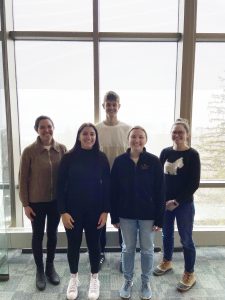
Title: Coral skeletons, non-mineral phases, and climate change
Domain Expert: Anne Gothmann (Physics & Environmental Studies)
Stats/DS Mentor: Laura Boehm Vock
CIR Fellows: Anja Logan, Nathaniel Mersy, Taylor Smith
Video Presentation Link
Description: Coral skeletons, which are important bellwethers for environmental changes like ocean acidification, are not entirely composed of hard mineral structures. It has been known for decades that up to 3 % by weight of the coral skeleton is composed of non-mineral phases: specifically, water and organic matter. While it is known that the presence of these phases may affect how coral skeletons respond to climate, we still lack a thorough understanding of the distribution and incorporation mechanisms of organic matter and water in coral skeletons. Recently, students in Professor Gothmann’s lab grew corals under controlled conditions to explore the distribution of non-mineral phases in the coral skeleton relative to the mineral structure. These samples were analyzed using mass spectrometry and a 2D, spatial, image-based dataset of elemental and isotopic composition across the coral skeletons was generated.
Students in the CIR will use spatial statistics methods and possibly machine learning techniques to interpret the image-based data and quantify spatial relationships between non-mineral and mineral phases in coral skeletons. Key questions include: “Do compositional changes in the mineral phase correlate with the presence of non-mineral phases?”, and “What is the spatial distribution of non-mineral phases in the coral skeleton?” This project may particularly appeal to students who are interested in environmental problems, students who have an interest in learning more about statistical image analysis techniques, and students who are comfortable exploring other programming languages (in addition to R).
Title: Illness and Incarceration: Women Inmate Deaths in Early Twentieth-Century China
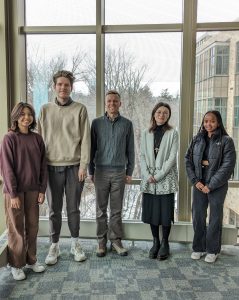
Domain Expert: Stephanie M. Montgomery (History & Asian Studies)
Stats/DS Mentor: Joe Roith
CIR Fellows: Upendo Laizer, Pavel Makouski, Meg Prapatthong
Video Presentation Link
Description: In early twentieth-century China, prison advocates imagined clean, modern carceral institutions with expansive wings for communal dining, education, vocational training, and self-sufficient food production. For women’s institutions, this often included child care and clinics offering women’s health care. However, the prevalence of communicable diseases and inconsistent access to modern medicine, both within and outside of the prison, complicated this rosy vision of incarceration within a hygienic, modern space. The early twentieth century, furthermore, was a tumultuous period of invasion, warfare, and revolution in China. As a result, prisons, like many state projects, were also poorly funded and ill-equipped to handle the serious medical conditions of a growing inmate population. It is then perhaps of no surprise to the historian that many women inmates died while in the care of prison officials.
This project examines the deaths of women who passed away of health complications while incarcerated in Shanghai and Tianjin prisons in the 1930s and 40s. Their official death certificates–already collected from municipal archives in the People’s Republic of China–provide a rich amount of data on each individual, including name, native place, age, relatives, criminal charges, dates and length of incarceration, cause of death, autopsy report, personal property, and attending prison physician. This individuated data raises a number of questions: What kinds of treatment and medicine were available in the prison? What types of deadly diseases were common amongst women inmates? Did gender play a factor in the specific kinds of ailments, treatments, or care that women inmates experienced? Potential research outcomes may incorporate mapping, data visualization, and more, including showcasing our work on an interactive website for scholars, students, and the public. The overall results of our analysis will enrich scholarly understanding of the historical intersections of incarceration, gender, and public health in early twentieth-century China.
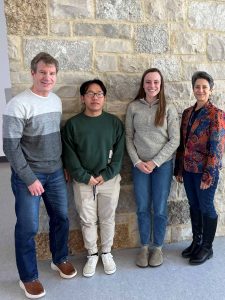
Title: Impacts of St. Olaf’s New First Year Experience Program
Domain Expert: Heather Campbell (Education & Director of First-Year Seminar)
Stats/DS Mentor: Paul Roback
CIR Fellows: Julia Cordes, Cheng Vang
Video Presentation Link
Description: The adoption of St. Olaf’s new general education curriculum brought a new First-Year Experience program for all incoming first-year students. Beginning with the Class of 2025, first-years participate in a new orientation program, take a First-Year Seminar course, take a Writing and Rhetoric course, and participate in SOAR (which is an extended orientation program led by peers that meet every other week during community time).
CIR Fellows participating in this project will compare data from the Class of 2025 (including but not limited to: GPA, retention information, national and local survey instruments, etc.) to previous first-year data to see if there were significant impacts after one year of the program.
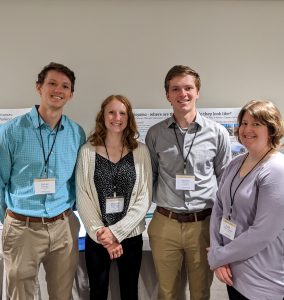
Title: Visualizing socio-ecological landscape data from Japan
Domain Expert: Paul Jackson (Chemistry & Environmental Studies) & kathy Tegtmeyer Pak (Asian Studies & Political Science)
Stats/DS Mentor: Katie Ziegler-Graham
CIR Fellows: Andrew Noecker, Rohan Silbaugh, Maureen Wainwright
Video Presentation Link
Description: We seek to collaborate with student researchers as part of our larger multimedia “book” project, called Pragmatic Utopians: Environmental Sustainability in Japan. We ask: What policies and practices are available to us as we confront complex environmental challenges (pollution + climate change + energy), which threaten ecological diversity and food systems? We find our answer through an interdisciplinary investigation, which includes video recorded interviews with Japanese “pragmatic utopians” and analysis of land use, demographic and sociopolitical data gathered by the Japanese government. “Pragmatic utopians” question mainstream expectations about a successful, comfortable, sensible life by building innovative schools, community practices and enterprises grounded in satoyama relationships. The term satoyama references sustainable, mutually beneficial human-environment land use patterns that have defined Japanese agricultural landscapes since the early 17th century. Our summer 2022 CURI team has designed models and GIS visualizations that allow us to specify where satoyama occurs, geographically speaking. We want our CIR team to take the Satoyama work and transform it into an independent variable, so that we can assess the extent to which satoyama practices improve environmental outcomes, such as biodiversity. We have a separate dataset that articulates biodiversity across Japan at a scale using the gridded mesh system of the archipelago
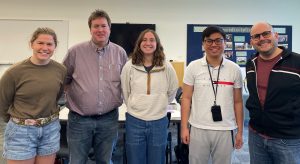
Title: Human Scent Project
Domain Experts: Doug Beussman (Chemistry & Biomolecular Science)
Stats/DS Mentor: Jaime Davila
CIR Fellows: Annika Cleven, Khang Huynh, Rachel Stumpf
Video Presentation Link
Description: Trained tracking dogs can follow the scent of a person over a mile or more, up to several days after the person has left the trail. The current hypothesis is that the dogs are smelling the volatile organic compounds (VOCs) given off by dead epithelial (skin) cells shed by the person as he/she walks. We are collecting epithelial cells from volunteers and determining in the lab what VOCs are given off by each person. There are several aims of this work. The first is to show that each person has a unique scent profile that the dog could use to distinguish one person’s trail from those of other people. We routinely detect 50 or more compounds emanating from human epithelial cells, in various quantities. The identities of many of these compounds are the same between people, but there are some differences observed as well. The amount of each compound can also vary between people. We will ultimately collect several hundred sample scent profiles, each with roughly 50 compounds, each of varying amounts. Aside from hopefully demonstrating that everyone has a unique scent profile, we also want to investigate if there are class characteristics in the profiles. Along with each sample, we are collecting gender, age, ethnicity, and vegetarian or not data. We are interested in applying statistics, likely principal component analysis or Spearman correlation factors, to determine for example whether scent profiles of a given age group can be classified together, or if gender determination can be made based on the scent profile. If class characteristics can be identified, we would then want to build decision trees that might allow the age, gender, ethnicity, etc. to be determined based on the VOC scent profile observed. Note: detailed chemical knowledge is not required for the statistical analysis portion of this project.
Related readings:
Determination of VOC marker combinations for the classification of individuals by gender and race/ethnicity, Forensic Sci. Int. 270 (2017) 193-199.
Comparison of the volatile organic compounds present in human odor using SPME-GC/MS, J.
Chem. Ecol., 31 (2005) 1607-1619.
You must be logged in to post a comment.